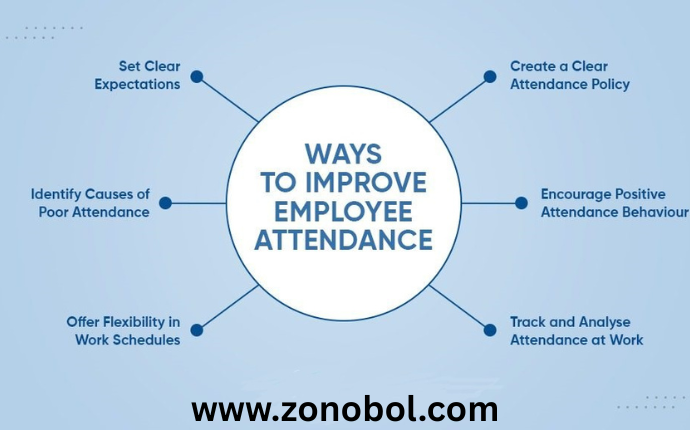How to Improve Employee Attendance at Work: Proven Strategies
Chronic absenteeism costs businesses billions annually in lost productivity. According to the Bureau of Labor Statistics, 3.2% of full-time workers are absent on any given workday. This guide outlines actionable strategies to improve attendance while fostering a positive workplace culture.
Why Employee Attendance Matters
Consistent attendance directly impacts:
- Team productivity and project timelines
- Customer service quality
- Morale among employees who cover for absent colleagues
- Operational costs (overtime pay, temporary staffing)
12 Proven Strategies to Improve Attendance
1. Implement Clear Attendance Policies
Document expectations including:
- Definition of excessive absenteeism
- Reporting procedures for planned/unplanned absences
- Consequences for policy violations
- Rewards for perfect attendance
2. Offer Flexible Work Arrangements
Options to consider:
- Compressed workweeks (4x10-hour days)
- Remote work days for personal appointments
- Staggered start/end times
3. Improve Workplace Conditions
Address physical and environmental factors:
- Ergonomic workstations to reduce fatigue
- Proper lighting and ventilation
- Clean and well-maintained facilities
4. Recognize and Reward Good Attendance
Effective recognition programs include:
- Quarterly bonuses for perfect attendance
- Additional PTO hours as rewards
- Public acknowledgment in team meetings
5. Address Transportation Barriers
Solutions for commute challenges:
- Subsidized transit passes
- Carpool matching programs
- Flexible start times for public transport users
6. Provide Comprehensive Health Benefits
Key coverage areas that reduce absenteeism:
- Mental health services
- Preventive care programs
- On-site flu shots and health screenings
7. Foster Employee Engagement
Engaged employees are 41% less likely to be absent (Gallup):
- Regular one-on-one check-ins
- Career development opportunities
- Meaningful recognition beyond attendance
8. Implement Return-to-Work Interviews
Conduct structured discussions after absences to:
- Identify patterns or underlying issues
- Demonstrate management's awareness
- Offer support for recurring problems
9. Train Managers on Attendance Management
Equip supervisors to:
- Spot attendance trends early
- Have difficult conversations professionally
- Apply policies consistently
10. Offer Wellness Programs
Initiatives that reduce health-related absences:
- On-site fitness classes
- Nutrition counseling
- Stress management workshops
11. Use Data to Identify Problems
Track metrics like:
- Frequency vs duration of absences
- Departmental patterns
- Day-of-week trends
12. Handle Chronic Absenteeism Properly
Progressive discipline steps:
- Verbal warning with documentation
- Written warning with improvement plan
- Suspension or termination as a last resort
Measuring the Impact of Attendance Improvements
Track these KPIs for 3-6 months after implementation:
- Absence rate: (Total absent days / Total workdays) x 100
- Frequency rate: Number of absences per period
- Bradford Factor scores for persistent short absences
Conclusion
Improving attendance requires a balanced approach that combines supportive measures with clear expectations. By addressing root causes, creating positive incentives, and consistently enforcing policies, organizations can reduce absenteeism by 30-50% within six months. The most effective strategies strike a balance between flexibility and accountability, demonstrating that the company values both productivity and employee well-being.



